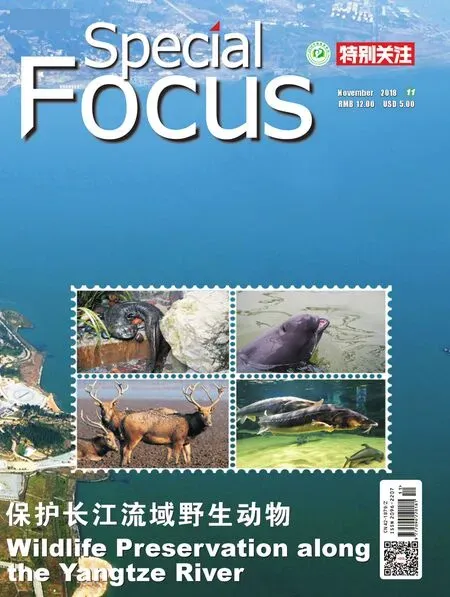Understanding Chinese Characters míng 明
2018-04-03ByZouXinshengHuangLu
By Zou Xinsheng & Huang Lu
明月几时有,把酒问青天 (míngyuè jǐshí yǒu,bǎ jiǔ wèn qīngtiān. How oft does the bright full moon appear? I ask the emerald sky with a cup of wine.) The poetic verse quoted from Prelude to Water Melody of Su Shi, a prominent Chinese poet of the Song Dynasty, more than 900 years ago, hits the nail on the head when it comes to the most original and prevalent meaning of the Chinese character明 (míng, bright) as illustrated in Shuowen Jiezi (Origin of Chinese Characters), the first Chinese Dictionary known in history.
Chinese people can tell the primary sense of the character明 from its structure doubtlessly, which combines two parts: the left one is 日 (rì) meaning“sun” and the right part is月 (yuè) meaning“moon.”In Chinese traditional culture, either sun or moon represents“brilliance.” According to the Records of the Grand Historian, also known by its Chinese name Shiji, a monumental history of ancient China and the world finished around 94 BC by Sima Qian, an official of the Han Dynasty, the famous idiom 明珠暗投 (míngzhū àn tóu) is another typical example of that meaning—which literally means“a shiny pearl stealthily thrown away gets attracted by a passerby”—while figuratively, it means“a top talent fails to be valued by superior.” Analogously, the extended sense of the character 明 is“beautiful, splendid,” which is adopted in words like 明秀 (míngxiù, enchanting) and明艳 (míngyàn, gorgeous).
It is this profound use of connotation that has vitalized Chinese characters for thousands of years, and the character明 is one of the best representations. The character 明can be used as 明 白 (míngbái, understand). For example, 愚者亦明之。 (yúzhě yì míng zhī. Even a fool can comprehend it as well.) The character 明also means明确 (míngquè, define, clarify) which is verified in明法度,定律令 (míng fǎdù, ding lǜlìng) quoted from the Records of the Grand Historian, which translates to“define and establish laws & decrees.”From a dynamic perspective, day alternates with night, as 日 (rì) symbolizes“day” and 月(yuè)“night,” and a brand new day will emerge consequently, as a result of which the character 明means“next.” For example, 明年 (míngnián, the following year).
Comparably speaking, another sense of the character 明 as“wise” is more widespread than others, which manifests in 小学而大遗,吾未见其明也 (xiǎo xué ér dà yí, wú wèijiàn qí míng yě; I don’t think it is sensible to learn the trivial while neglecting the important), the famous remarks from“On Teachers,” also known as“Shi Shuo”in Chinese by Han Yu, a remarkable scholar and philosopher of the Tang Dynasty, 1200 years ago.
Characterized by illumination, the character明 radiates from not only in the literal sense but also beholds anenthusiasm for Chinese culture.Learning the power of such character is the cornerstone to fortify an understanding of China in a global community.
